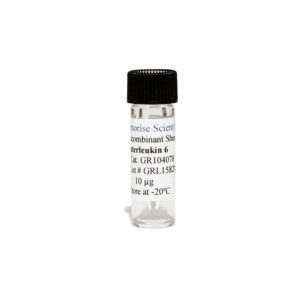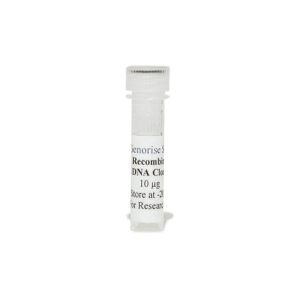Nori Human Apelin 13 ELISA Kit
$508.00 – $916.00
This ELISA kit is for quantification of apelin 13 in human. This is a quick ELISA assay that reduces time to 50% compared to the conventional method, and the entire assay only takes 3 hours. This assay employs the quantitative sandwich enzyme immunoassay technique and uses biotin-streptavidin chemistry to improve the performance of the assays. An antibody specific for APLN13 has been pre-coated onto a microplate. Standards and samples are pipetted into the wells and any APLN13 present is bound by the immobilized antibody. After washing away any unbound substances, a detection antibody specific for APLN13 is added to the wells. Following wash to remove any unbound antibody reagent, a detection reagent is added. After intensive wash a substrate solution is added to the wells and color develops in proportion to the amount of APLN13 bound in the initial step. The color development is stopped, and the intensity of the color is measured.
Alternative names for apelin 13: APLN13, APLN 13
This product is for laboratory research use only not for diagnostic and therapeutic purposes or any other purposes.
- Description
- How Elisa Works
- Product Citation ()
- Reviews (0)
Description
Nori Human Apelin 13 ELISA Kit Summary
Alternative names for apelin 13: APLN 13, APLN13
| Assay Type | Solid Phase Sandwich ELISA |
| Format | 96-well Microplate or 96-Well Strip Microplate |
| Method of Detection | Colorimetric |
| Number of Targets Detected | 1 |
| Target Antigen Accession Number | NA |
| Assay Length | 3 hours |
| Quantitative/Semiquantitative | Quantitative |
| Sample Type | Plasma, Serum, Cell Culture, Urine, Cell/Tissue Lysates, Synovial Fluid, BAL, |
| Recommended Sample Dilution (Plasma/Serum) | No dilution for sample <ULOQ; sufficient dilution for samples >ULOQ |
| Sensitivity | 6 pg/mL |
| Detection Range | 31.25-2000 pg/mL |
| Specificity | Human apelin 13 |
| Cross-Reactivity | < 0.5% cross-reactivity observed with available related molecules, < 50% cross-species reactivity observed with species tested. |
| Interference | No significant interference observed with available related molecules |
| Storage/Stability | 4 ºC for up to 6 months |
| Usage | For Laboratory Research Use Only. Not for diagnostic or therapeutic use. |
| Additional Notes | The kit allows for use in multiple experiments. |
Standard Curve
Kit Components
1. Pre-coated 96-well Microplate
2. Biotinylated Detection Antibody
3. Streptavidin-HRP Conjugate
4. Lyophilized Standards
5. TMB One-Step Substrate
6. Stop Solution
7. 20 x PBS
8. Assay Buffer
Other Materials Required but not Provided:
1. Microplate Reader capable of measuring absorption at 450 nm
2. Log-log graph paper or computer and software for ELISA data analysis
3. Precision pipettes (1-1000 µl)
4. Multi-channel pipettes (300 µl)
5. Distilled or deionized water
Protocol Outline
1. Prepare all reagents, samples and standards as instructed in the datasheet.
2. Add 100 µl of Standard or samples to each well and incubate 1 h at RT.
3. Add 100 µl of Working Detection Antibody to each well and incubate 1 h at RT.
4. Add 100 µl of Working Streptavidin-HRP to each well and incubate 20 min at RT.
5. Add 100 µl of Substrate to each well and incubate 5-30 min at RT.
6. Add 50 µl of Stop Solution to each well and read at 450 nm immediately.
Background:
Apelin (also known as APLN) is a peptide that in humans is encoded by the APLN gene.[1] Apelin is the endogenous ligand for the G-protein-coupled APJ receptor[2-6] that is expressed at the surface of some cell types. It is widely expressed in various organs such as the heart, lung, kidney, liver, adipose tissue, gastrointestinal tract, brain, adrenal glands, endothelium, and human plasma. Apelin is a new peptide that was identified in 1998 by Professor M. Fujino’s team.[1] Apelin gene encodes a pre-proprotein of 77 amino acids,[1] with a signal peptide in the N-terminal region. After translocation into the endoplasmic reticulum and cleavage of the signal peptide, the proprotein of 55 amino acids may generate several active fragments: a 36 amino acid peptide corresponding to the sequence 42-77 (apelin 36), a 17 amino acid peptide corresponding to the sequence 61-77 (apelin 17) and a 13 amino acid peptide corresponding to the sequence 65-77 (apelin 13). This latter fragment may also undergo a pyroglutamylation at the level of its N-terminal glutamine residue. However the presence and/or the concentrations of those peptides in human plasma has been questioned.[7] Recently, 46 different apelin peptides ranging from apelin 55 (proapelin) to apelin 12 have been identified in bovine colostrum, including C-ter truncated isoforms.[8] The sites of receptor expression are clearly linked to the different functions played by apelin in the organism.
References
- Tatemoto K, et al. (1998). Biophys. Res. Commun. 251 (2): 471–6.
- Lee DK, et al. (2000). Neurochem. 74 (1): 34–41.
- Szokodi I, et al. (2002). Res. 91 (5): 434–40.
- Kleinz MJ, et al. (2005). Ther. 107 (2): 198–211.
- O’Dowd BF, et al. (1993). Gene 136 (1–2): 355–60.
- Devic E, et al. (1996). Dev. 59 (2): 129–40.
- Mesmin C, et al. (2010). Rapid Commun Mass Spectrom 24 (19): 2875–84.
- Mesmin C, et al. (2011). J Proteome Res 10 (11): 5222–31.
Be the first to review “Nori Human Apelin 13 ELISA Kit”
You must be logged in to post a review.































Reviews
There are no reviews yet.